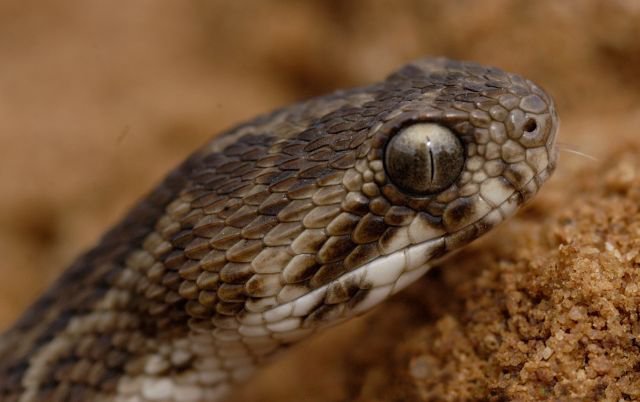
Researchers at Mysore Universityhave recently found that an enzyme extracted from the leaves of a medicinal plant, Tricosanthus tricuspidata, can counter the tissue damage caused by the bite of the venomous saw-scaled viper.
Around 50,000 people die every year from snakebites in India. Although there are 50 – 60 species of poisonous snakes in India, four of them – the ‘Big Four’ – have gained celebrity status for causing the highest number of snakebite-related fatalities: Indian cobra, common krait, saw-scaled viper, and Russell’s viper.
The viper venom affects the vascular system. Within a few minutes to few hours, the bitten area rapidly swells, followed by severe haemorrhaging, discolouring and blistering. “The only accepted treatment for snakebite is poly or monovalent anti-venoms. Although anti-venoms are able to reduce mortality, they are unable to neutralize local tissue damage,” says Bannikuppe Vishwanath, scientist at University of Mysore and the corresponding author of the study.
A study published in 2016 showed that the venom of the saw-scaled viper works in an interesting manner – it triggers a specific type of white blood cells to discharge their DNA and create a filamentous network of DNA and proteins. This network acts like a trap, concentrating venom and preventing it from entering the blood circulation. The venom accumulates at the injected site and causes continued and exaggerated tissue damage. However, an enzyme that can degrade DNA – a DNase – could degrade this trap.
“We analyzed the mode of treatment by traditional folk healers for snakebite cases. They normally make poultice from more than one medicinal plant, then drink and also apply [it] on the bitten region,” says Vishwanath.
To investigate this, his team collected leaves of ten medicinal plants used to treat snakebite victims using the help of tribal communities in Western Ghats of Karnataka. Of all the tested plants, the proteins isolated from T. tricuspidata showed potent DNase activity, prompting them to purify and test this plant extract further.
T. tricuspidata, has been used by local tribal communities of Nasik district in Maharashtra to treat snakebites, but there have been no scientific reports to show their potency. When saw-scaled viper venom was injected into the tails of mice, cells started dying from the third day and by the tenth day, the tail detaches displaying extensive tissue damage. On a tissue injury score of 1 to 10, venom-injected tails scored 10. When DNase enzyme purified from the leaves of T. tricuspidata was injected 30 minutes after the venom injection into rat tails, there was significant improvement in their shape and structure, with the injury score reducing to 0 on the tenth day.
The viper venom is also rich in enzymes that can break down proteins and one of key molecules it targets is collagen– a protein that strengthens and supports the structure of several tissues, such as bone, tendons, and skin. Tails with injected venom showed almost complete loss of collagen by day 10, confirming breach in the integrity of tissues. The addition of DNase from T. tricuspidata reversed this damage, with the tail tissue showing near-normal levels of collagen by day 10.
“Snake venom is a mixture of toxins and the plant extracts are also mixture of secondary metabolites,” comments Vishwanath. Currently, Vishwanath and his colleagues have characterized more than 30 different active plant components which work against specific venom toxins. He proposes, “These small molecules along with plant DNase and protease application shall complement the anti-venom therapy”
Rakhi Dandona, scientist at Public Health Foundation of India comments, “India needs to prioritise snakebite control on an urgent basis and increase access to anti-venom for survival of victims”. She adds, “Such alternate treatments may have a role to treat secondary complications related to snakebite.”